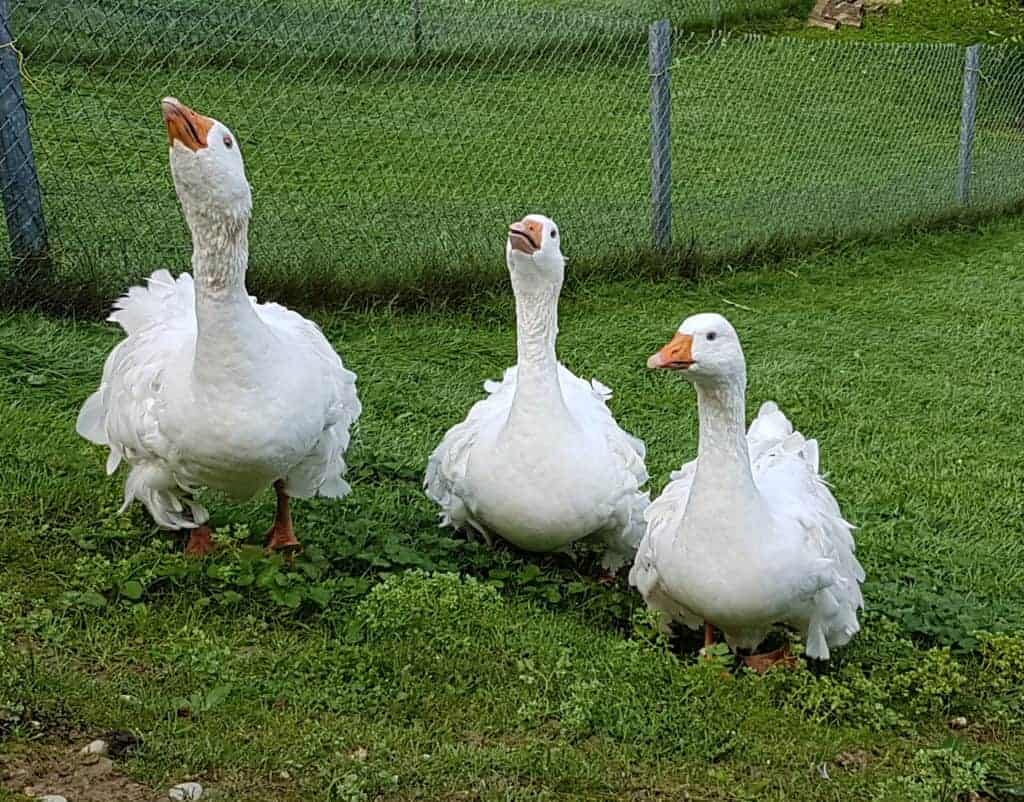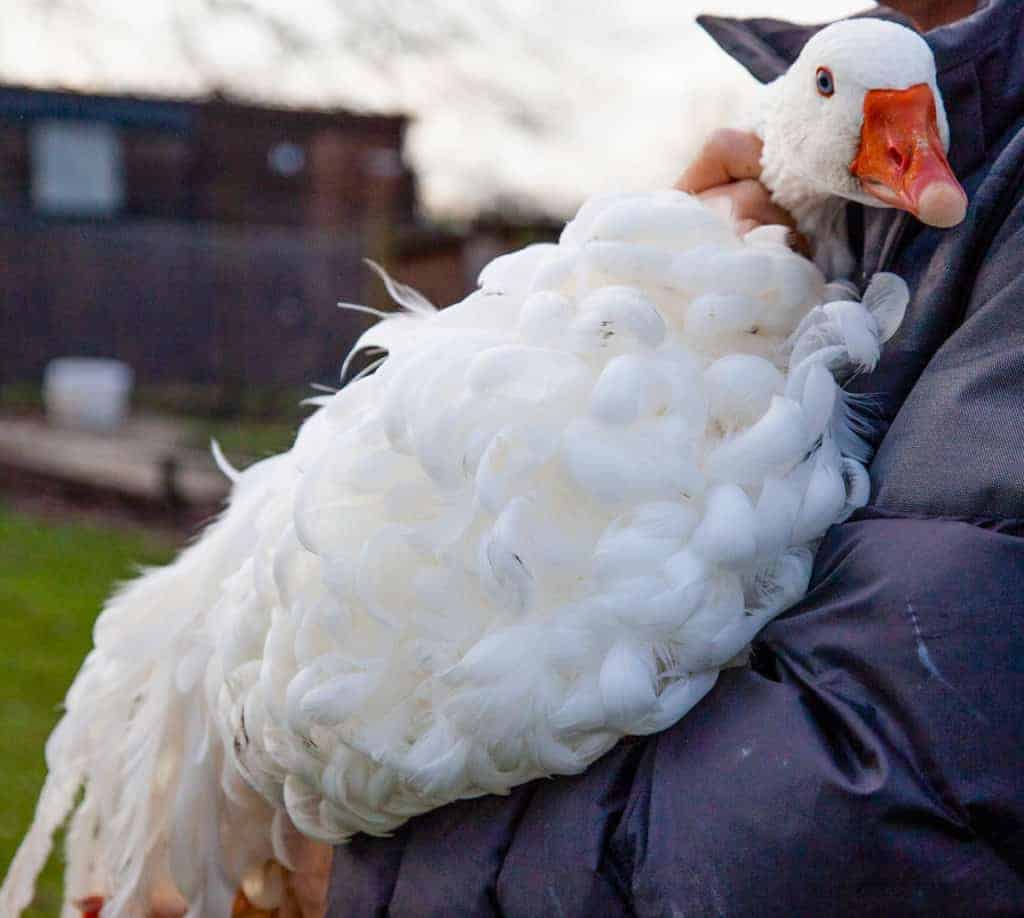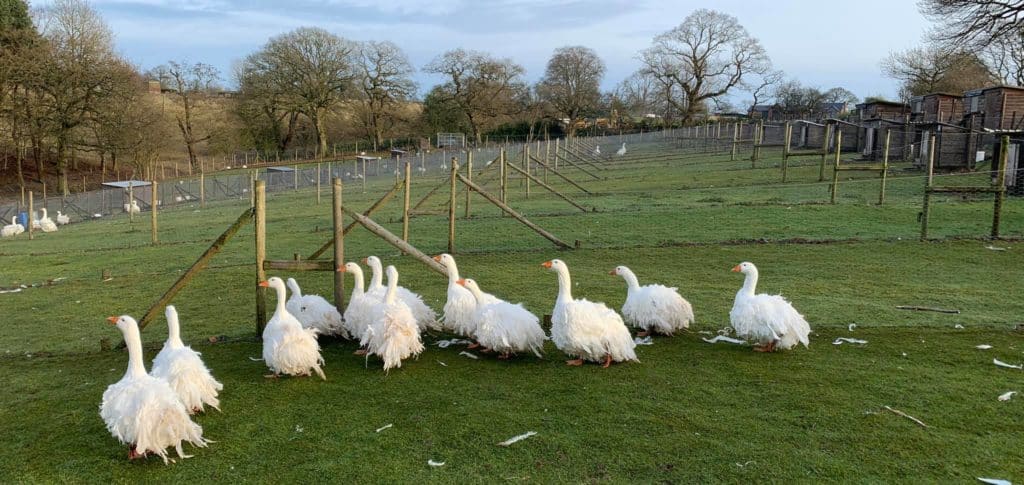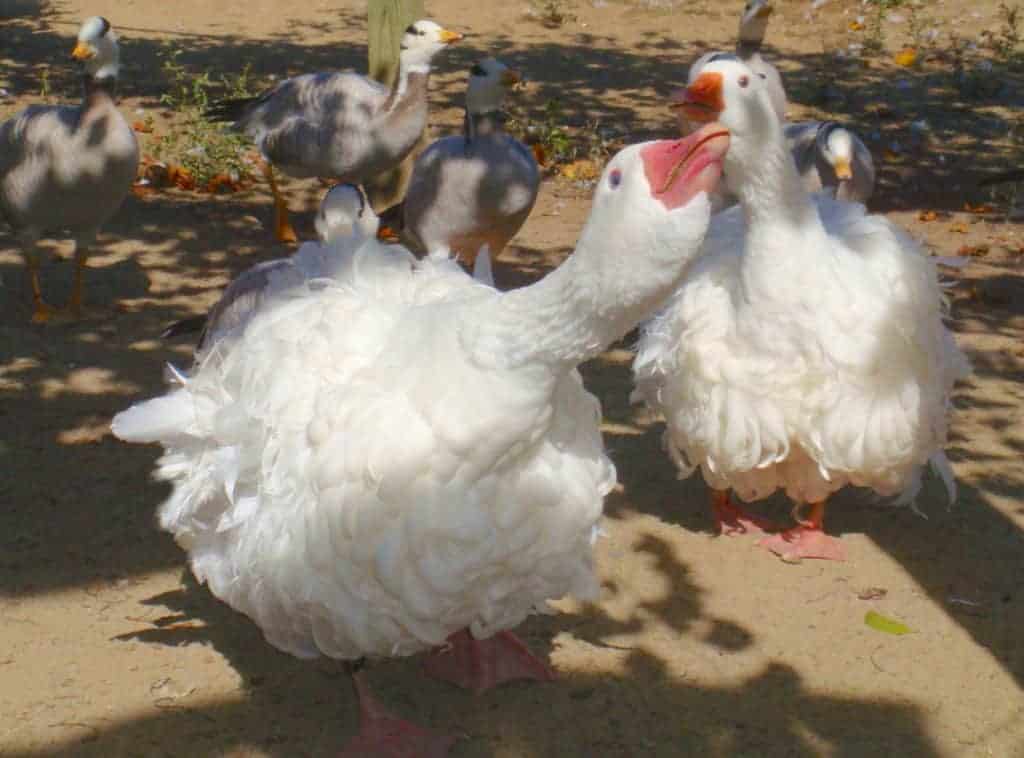Sebastopol Goose


Light breed
Domesticated Greylag Goose Anser anser
Sebastopols were probably introduced into the UK in 1859. Whether or not they came from Sebastopol itself (in the Crimea) is unknown. According to Edward Brown (1929), white birds with feather curl come from countries surrounding the Black Sea, and along the Danube. Most Sebastopols in the UK are white, but there is also a buff variety. If the spot gene is introduced, non-standard Buff-back and Grey-back Sebastopols will result.

There are two plumage forms: the smooth-breasted and the frizzle. The frizzle has curly feathers all over, except for the head and upper neck. The smooth-breasted form has long, curled scapulars, thigh and wing coverts. Sebastopols look spectacular in new autumn plumage, but they need good water conditions to keep them clean through the year.

French enthusiasts know this as l’oie frisse and German Lock-engäns. It is a popular exhibition class all over Europe.
Sebastopol Geese can be good layers, producing up to 40 eggs a year.
Share this page